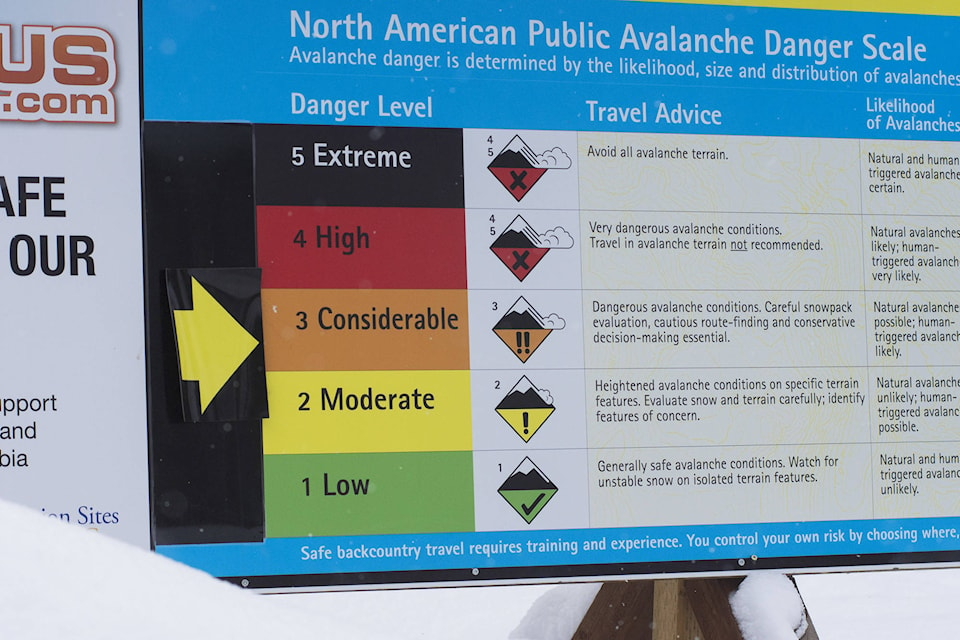Heavy snowfall over the past few weeks has created excellent conditions for the snowmobile enthusiasts who take to the back country around Sicamous, but with heavy snow the threat of an avalanche looms.
“I’m tired of shoveling it, but up on the hill it’s deep. It’s nice,” said Jarvis Siegel as he readied his Polaris snowmobile for a run up the Owlhead trail system. Alongside him was Paige Siegel; taking her first-ever ride.
Joe Lammers a Public Avalanche Forecaster with Avalanche Canada said some parts of the north and south Columbia have received as much as 50 cm of new snow.
“The riding is great at the moment, but there are some areas where you definitely have to be careful,” he said.
High altitude terrain that is exposed to the wind is the most likely to have developed reactive pockets of snow and be at increased risk of avalanche; Lammers said the best and safest riding will be found in terrain at mid elevation that is sheltered from the wind.
Kevin Mcwhirter, a veteran sledder who has been enjoying the terrain on Owlhead regularly since 1990, said the heavy snowfall is making it enjoyable to ride, but also forming large snow cornices which have the potential to trigger avalanches.
Snow cornices are formed when wind blows snow over top of the crest of a mountain or other break in the terrain where it begins to freeze together and build out horizontally into a ledge.
“It just gets dangerous,” Mcwhirter said.
The avalanche danger notice posted at the bottom of the Owlhead trails on Feb. 25 was rated as considerable or three on a scale of one to five. The North American Public Avalanche Danger Scale’s considerable rating reads: “Dangerous avalanche conditions. Careful snowpack evaluation, cautious route-finding and conservative decision-making essential.”
The scale says natural avalanches are possible at this level, but human triggered avalanches are likely.
Lammers and Mcwhirter both stressed the importance of taking an avalanche safety course in order to learn the necessary information and skills for staying safe in the backcountry.
The Avalanche Skills Training courses administered by Avalanche Canada teaches backcountry users about avalanche formation and release, identifying avalanche terrain, the basics of trip planning and how to safely travel near avalanche terrain. The course, which has both classroom and field components also provides an introduction on how to rescue a companion should the worst happen.
Lammers said the three pillars of avalanche safety are: Carrying equipment including a transceiver, probe and shovel, being educated on signs of instability and keeping up to date on current conditions. He said no other source of information can replace reading the daily forecast put out by Avalanche Canada on www.avalanche.ca.
Sled Sicamous advises riders to get avalanche training before setting out into the backcountry. They also suggest taking other safety measures such as planning a route that is appropriate for current avalanche conditions and riding with people who respect mountain hazards.
Lammers said the weather pattern somewhat uncertain heading into the weekend, making it especially important that sledders check the daily forecast before heading and as winter turns to spring the conditions will only grow more uncertain. He said it has been cold and snowy for the past few weeks, keeping the sun that usually packs a punch by this time of year from having much effect.
“The very first time we get a bit of warming and some direct solar radiation, I think it’ll be a shock to the snow pack.”
Once the sun starts to weaken terrain features like cornices, Lammers said the likelihood of surprisingly and possibly dangerously large avalanches will only increase.
